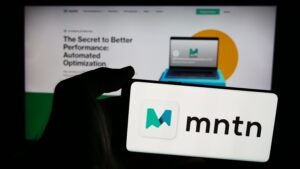 “The Sell Sider” is a column written by the sell side of the digital media community.
“The Sell Sider” is a column written by the sell side of the digital media community.
Today’s column is written by Jarrod Dicker, head of ad product and technology at The Washington Post.
The publishing world now, more than ever, is extraordinarily fast. What used to take seconds for a URL load can now take milliseconds.
Google Accelerated Mobile Pages (AMP), for example, renders articles at 500 milliseconds. Facebook Instant, the platform’s “incredibly fast and immersive reading experience,” boasts load times of 200 to 300 milliseconds. And with Progressive Web Apps, publishers can deliver content at record speeds of 80 milliseconds.
Building a content experience that’s fast and user-first is critical for driving higher engagement and interest across editorial content. The same mentality should apply to the ad experience.
By creating dedicated engineering and product pods focused on revenue product innovation within their organizations, publishers can move toward building a faster web for advertisers and consumers alike.
Here are a few build-first methodologies to motivate your organization to think creatively when building ad products that improve experience and delivery.
Measure And Analyze
For publishers that think progressively about building a better experience across their properties, it’s important to identify ad issues, measure performance and user interaction, analyze results and repeat. Build and compare new ad products against preexisting ones to analyze user preference. Think of it as doing a spring cleanup of outdated processes.
In the age of light and fast, ad experiences must appease users while still bringing value to clients. Publishers can get there by experimenting, monitoring and adjusting based on the best user experience and building new methodologies to redefine KPIs for advertisers.
Balance Innovation With Restoration
Everyone wants to build the next best thing. However, there is a lot that needs to be done to repair the years of adtech that’s layered throughout a code structure.
Companies must empower every technology group within the organization. Engineering should be embedded throughout the newsroom and sales floors to promote a culture that fosters rapid experimentation. It’s impossible to know what works or what can improve a system without trying it. Having engineering integrated through the organization – figuratively and physically – allows a company’s tech resources to truly understand the needs and behaviors of other departments.
Build Technologies, Not Features
It’s easy to build a feature. It’s hard to build a technology. However, the latter is what will differentiate an organization and allow for monetization opportunities outside of the current standard.
By thinking about key features, such as video and display products, and their core components, publishers can build technologies that enable the production of an ongoing set of features that evolve as the industry evolves.
The same thinking applies to ad weight. While everyone agrees that the industry needs to build user-first experiences, it’s not easy to go back to a client and tell them to “slim down” their campaign. However, if publishers are willing to build technologies that ingest creative and output weight and optimization suggestions, then they can leverage an automated system to move toward improving the speed of advertising on the web.
Ad products can be fast. They can also be user-first, and technologies can repair a fractured bridge between consumer and brand in online advertising. It will take the effort of everyone who builds ad technology to listen to the users and build according to how brands can best engage with their customers.
The responsibility is on us now, as publishers and technology providers, to not continue to inject weak or slow products into the system. This is a moment of transformation, and instead of looking at ad blocking and viewability as an inhibitor, let’s look at it as a catalyst for change.
Follow Jarrod Dicker (@jarroddicker), The Washington Post (@washingtonpost) and AdExchanger (@adexchanger) on Twitter.













